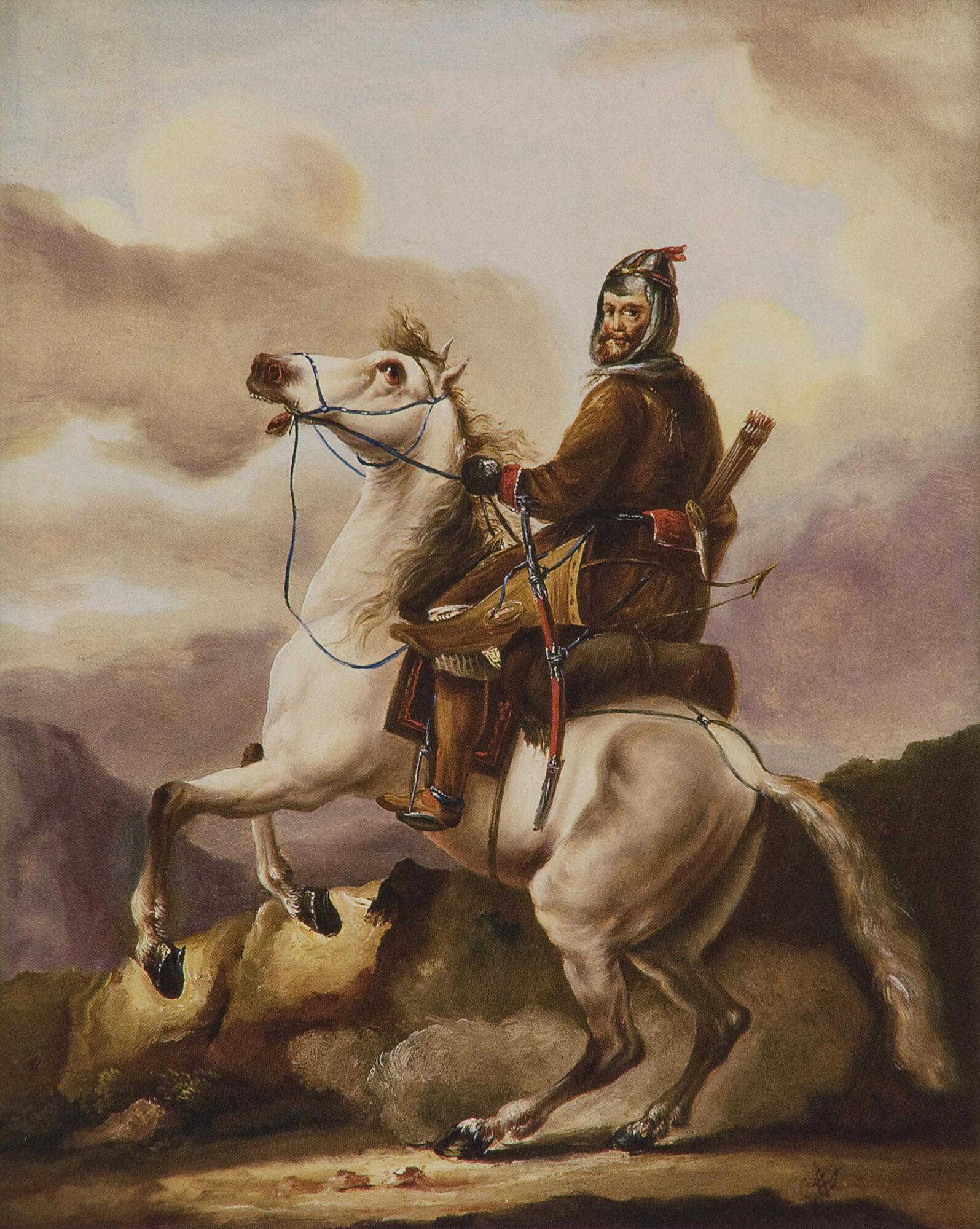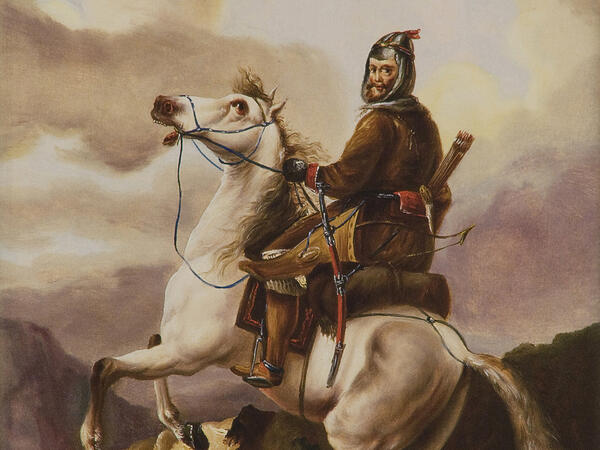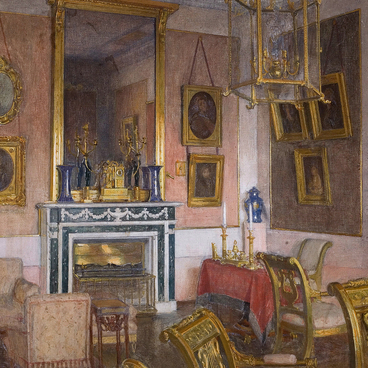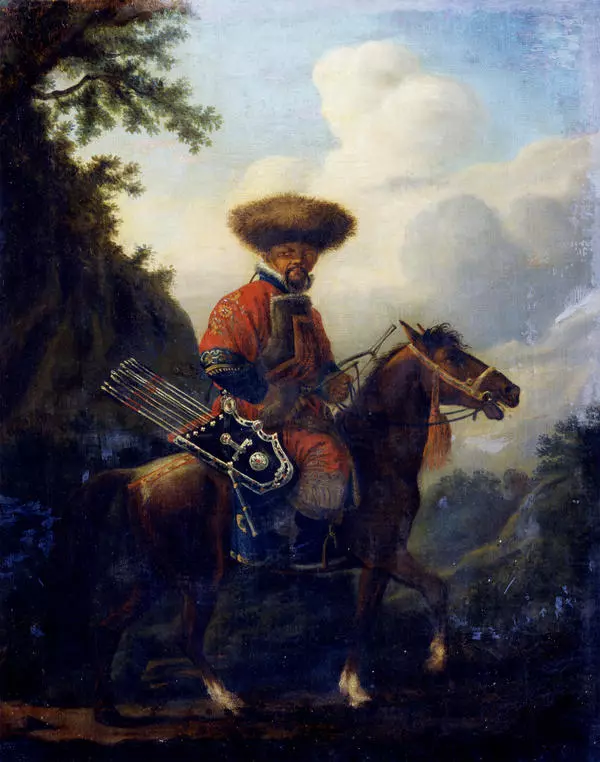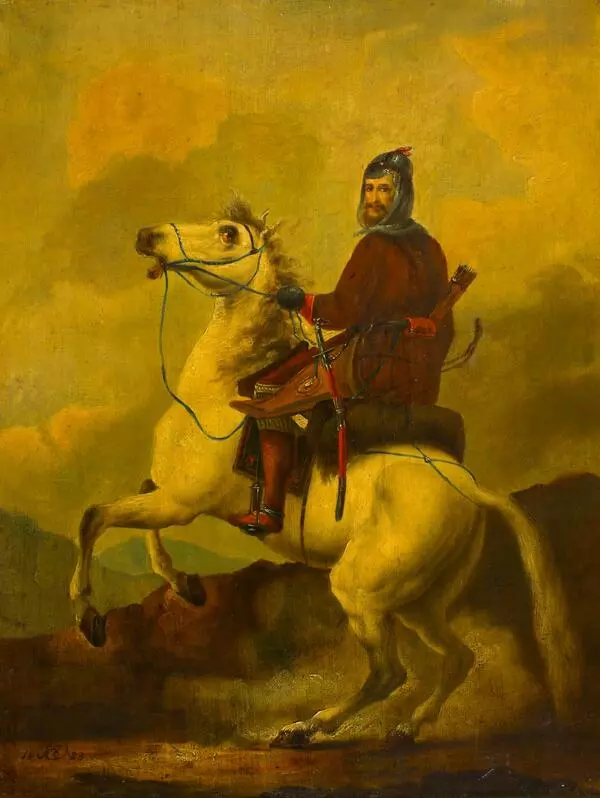Alexander Orlovsky was born in 1777 in Warsaw, it was the capital of the Polish-Lithuanian Commonwealth back then. He grew up in a noble family. The patron of the arts, Princess Izabella Czartoryska, noticing in the future artist a penchant for drawing, made him an apprentice of the Polish painter of French origin Norblin de la Gourdaine. In 1794, Orlovsky joined the Polish army, took part in several battles and, being wounded in one of them, returned to Warsaw.
In 1802, he moved to St. Petersburg, where the Grand Duke Konstantin Pavlovich liked his paintings and settled him in the imperial court. To get to know Russian culture better, Orlovsky traveled to Moscow, Novgorod and other cities of the country. Moreover, he traveled abroad visiting France, Italy and Germany.
In 1809, the St. Petersburg Academy of Arts awarded him the title of academician for the painting ‘Cossack Bivouac’. Ten years later, Orlovsky was assigned to the General Staff to ‘make drawings of military uniforms.’ In his spare time, the artist painted with oil paints, created pencil, watercolor and pen drawings. He worked as a portrait painter, landscape painter, and battle painter, created works on everyday subjects. Orlovsky’s graphic paintings are notable for their freedom and energy of the brush stroke.
Alexander Orlovsky took part in battles with Napoleon and saw representatives of different peoples of multinational Russia on duty. He transferred the images of these heroes to canvases. In the painting “Rider” from the museum’s collection, the artist depicted a man in full armor, wearing a peculiar national costume, on a rearing white horse against the backdrop of a formidable, seething landscape. Orlovsky did not strive to accurately reproduce the types of war horses. In his opinion, the main thing was the expressiveness of the pose: ‘A horse will always remain a horse, whether it is Turkish or Arab, the whole point is how it is painted.’
The Russian art historian, Baron Nikolay Wrangel, in one of his works gave the following characteristic of Orlovsky,
In 1802, he moved to St. Petersburg, where the Grand Duke Konstantin Pavlovich liked his paintings and settled him in the imperial court. To get to know Russian culture better, Orlovsky traveled to Moscow, Novgorod and other cities of the country. Moreover, he traveled abroad visiting France, Italy and Germany.
In 1809, the St. Petersburg Academy of Arts awarded him the title of academician for the painting ‘Cossack Bivouac’. Ten years later, Orlovsky was assigned to the General Staff to ‘make drawings of military uniforms.’ In his spare time, the artist painted with oil paints, created pencil, watercolor and pen drawings. He worked as a portrait painter, landscape painter, and battle painter, created works on everyday subjects. Orlovsky’s graphic paintings are notable for their freedom and energy of the brush stroke.
Alexander Orlovsky took part in battles with Napoleon and saw representatives of different peoples of multinational Russia on duty. He transferred the images of these heroes to canvases. In the painting “Rider” from the museum’s collection, the artist depicted a man in full armor, wearing a peculiar national costume, on a rearing white horse against the backdrop of a formidable, seething landscape. Orlovsky did not strive to accurately reproduce the types of war horses. In his opinion, the main thing was the expressiveness of the pose: ‘A horse will always remain a horse, whether it is Turkish or Arab, the whole point is how it is painted.’
The Russian art historian, Baron Nikolay Wrangel, in one of his works gave the following characteristic of Orlovsky,
